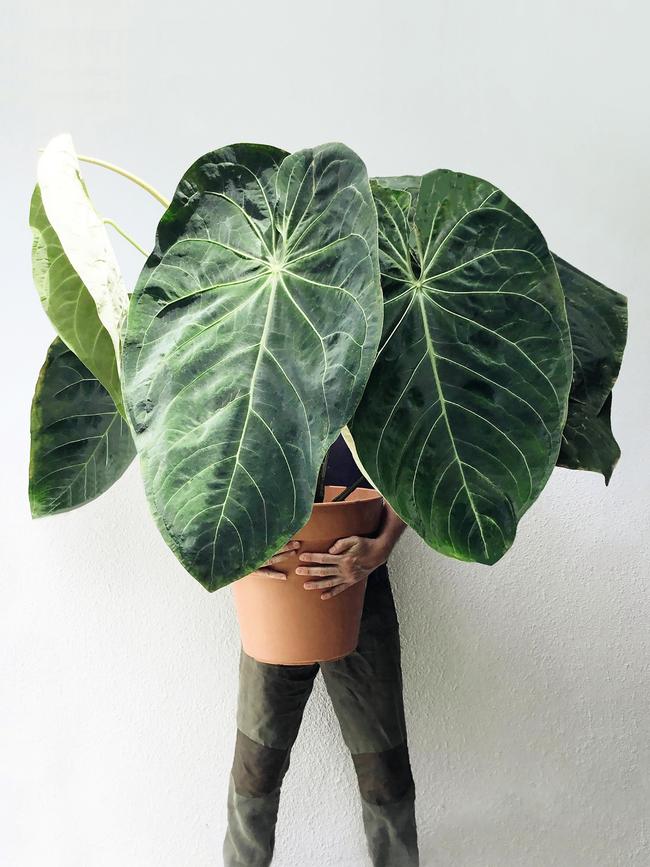Indoor plant guru Craig Miller-Randle’s guide to the home jungle
If you want to keep your indoor plants happy and get some styling inspiration, there are few better guides than Craig Miller-Randle.

Indoor plants have become an essential item in decorating our homes and offices, improving our health and wellbeing at the same time. And for those keen to become a better “plant parent” and get some styling inspiration, there are few better guides than Craig Miller-Randle.
Miller-Randle has been obsessed with plants for five decades. Aged four, captivated by his father’s greenhouse filled with hanging orchids and tropical plants, he asked for and received his own Cattleya orchid; as a teenager he grew African violets on pebble-filled trays under grow-lights in his bedroom. In his Melbourne home he now tends about 350 houseplants – some of which he has owned for decades. “My plants tend not to die,” he says with a smile.

After training as a horticulturist and working in plant production and retail, where he honed his creative skills, Miller-Randle turned his hand to homewares, setting up MRD Home, which specialises in modern lighting, furniture and accessories. But fame came through Instagram, where his gorgeously styled images of indoor plants have attracted 238,000 followers. That has led to a role as presenter on indoor plants for television’s Gardening Australia, and most recently his book Green Thumb: A Practical Guide to Winning Over Your Indoor Plants (Plum/Pan Macmillan $45).

The book includes an illustrated A-Z of popular plants, followed by the basics of plant care such as choosing the right pot and potting mixes, and understanding light levels, temperature and humidity. For really dark spots, he recommends having a “stunt double”, where two plants are swapped over each month to allow one to recover in optimum light. Chapters on fertilising, pests and diseases, grooming, training and propagation are enhanced with how-to photos and instructions.

Watering too much is the cause of many indoor plant deaths. “The trick is to water a plant only when it needs it – but working that out is the skill,” says Miller-Randle. “You can’t just water at fixed intervals; you have to stick your finger into the potting mix and feel if it’s damp. If it is, then don’t water, no matter how long it’s been.” His chapter on the art of watering is full of detailed advice, served with a nice sprinkling of humour.
For newbies looking for something unkillable, he recommends ZZ plant (Zamioculcas zamiifolia), which he says can go for months without water and survives in very low light; and swiss cheese plant (Monstera deliciosa). “I can’t fault it,” he says. “It’s iconic and chic, tolerates diverse conditions and is affordable.” He’s talking about the regular green Monstera – some of its rare variegated forms can be very expensive.

Miller-Randle has strong feelings about extreme prices being charged for plants online. “I’ve seen auctions reach $10,000 for a single plant but it’s all a gamble,” he says. “The smaller the plant, the greater the risk it will die – and there are no consumer protections. I see price gouging on plants that I know you can buy cheaply in a local store. While I understand coveting a plant, I’ve trained myself to wait until it’s widely available and cheaper.”
The houseplant love-fest is set to continue. “The variety of quirky, interesting plants available now is remarkable,” Miller-Randle enthuses. “There’s an amazing choice at prices for everyone.”
Q&A
My lawn thrived this summer and has now spread under the timber edging, invading the garden beds. How wide and deep should lawn edging be to stop this? Coralie Jenkin, Geelong, Vic
It depends on the lawn type. Aggressive kikuyu and couch can go down to 30cm. Edging of weathering steel comes in various heights to suit this, while aluminium, plastic and composite products tend to be 15cm high at most. For soft-leaf buffalo lawn varieties, an edging of bricks or pavers, set just below lawn level in a mortar bed, makes an easy-mowing edge. Timber edging rots quickly.
I’ve cut the jacaranda branch overhanging our gutters but it’s sprouting again. How can I stop this? Peter Barclay, Melbourne
Jacarandas respond badly to heavy lopping, sending up vigorous, vertical shoots that spoil the tree’s shape and make the problem worse. To minimise this, always cut back to a fork rather than mid-branch. If possible, rub off any new shoots when small.
We lost all our grapes to mildew and now it’s on the mint, spinach, salvias etc. Natural remedies haven’t helped. What can we do? Elizabeth Shadiac, Adelaide
mildew is common in warm, moist conditions, especially where plants are crowded and air circulation poor. OCP Eco-fungicide is organic but kills fungal growth quickly, leaving a protective coating against new spores. Fortnightly seaweed solutions help plants resist infection; you can add these to the spray mix. Water early in the day, and avoid splashing the foliage.

Send your questions to: helenyoungtwig@gmail.com or Helen Young, PO Box 3098, Willoughby North, NSW 2068. Website: helenyoung.com.au. The best question for April wins a Bokashi One Starter Pack worth $196 for hygienic composting in the kitchen, containing two buckets and 2kg of mix; bokashi.com.au. March’s winner is Dani Chatfield of Mt Macedon for her question about potatoes.




To join the conversation, please log in. Don't have an account? Register
Join the conversation, you are commenting as Logout